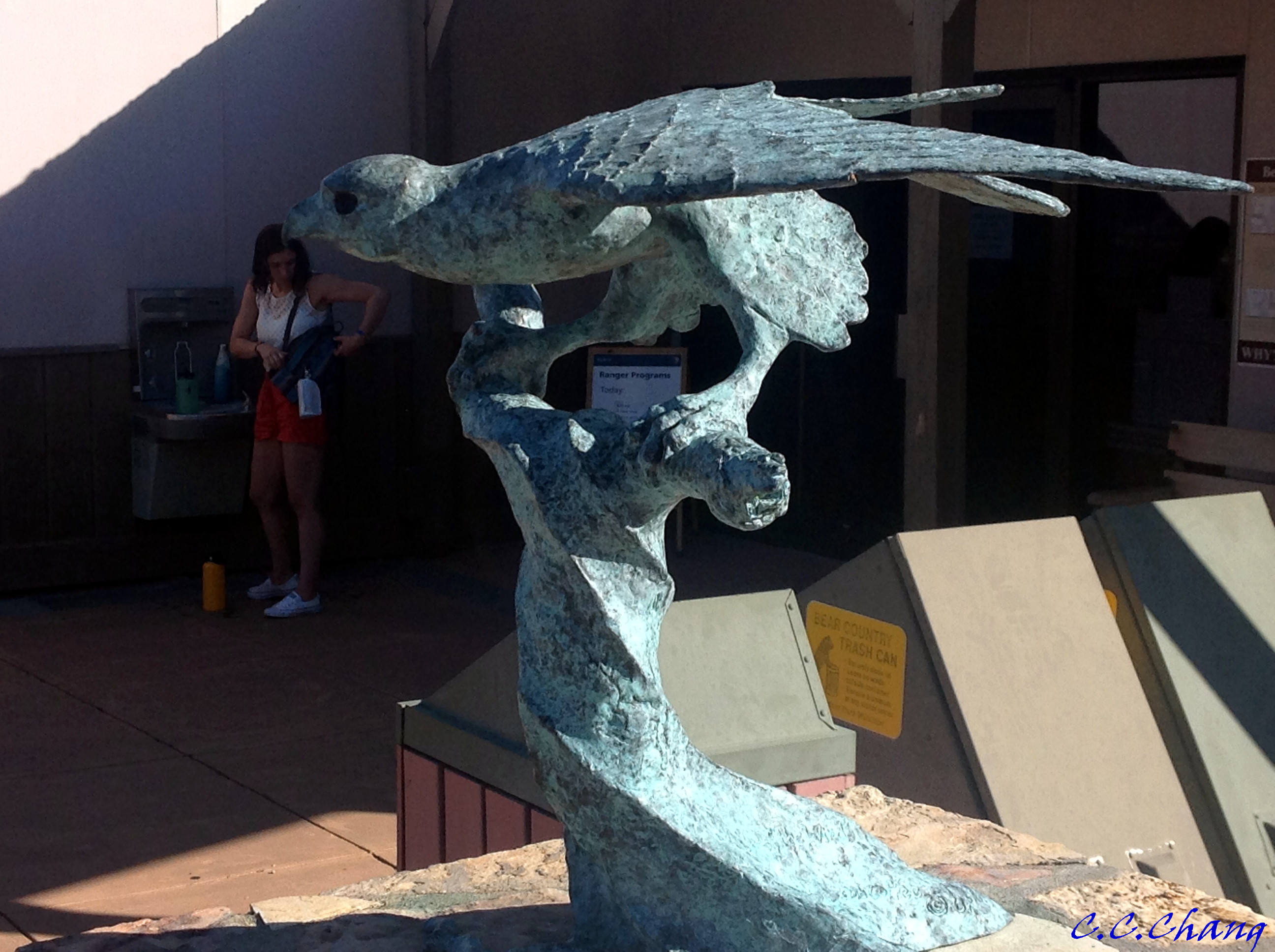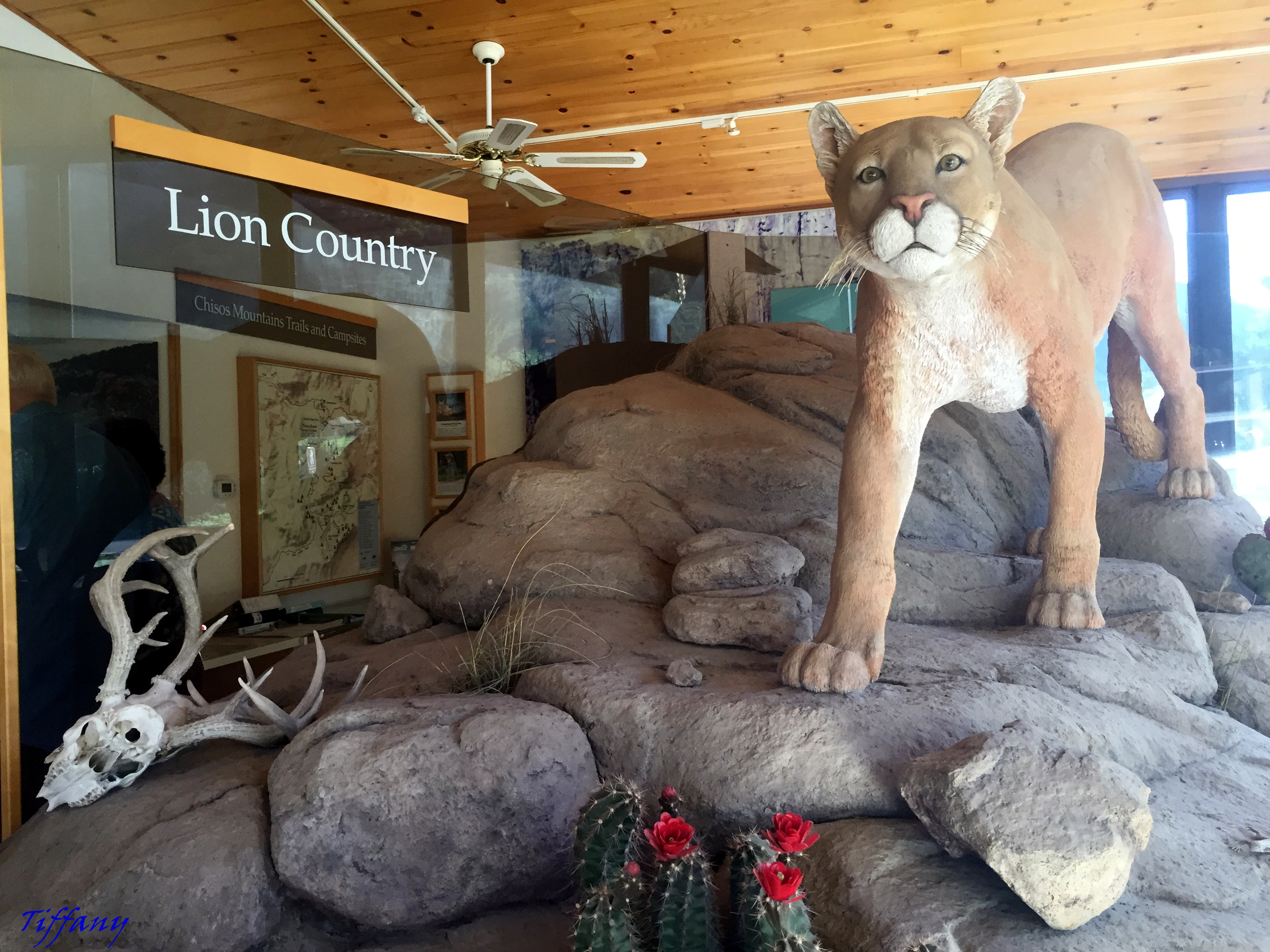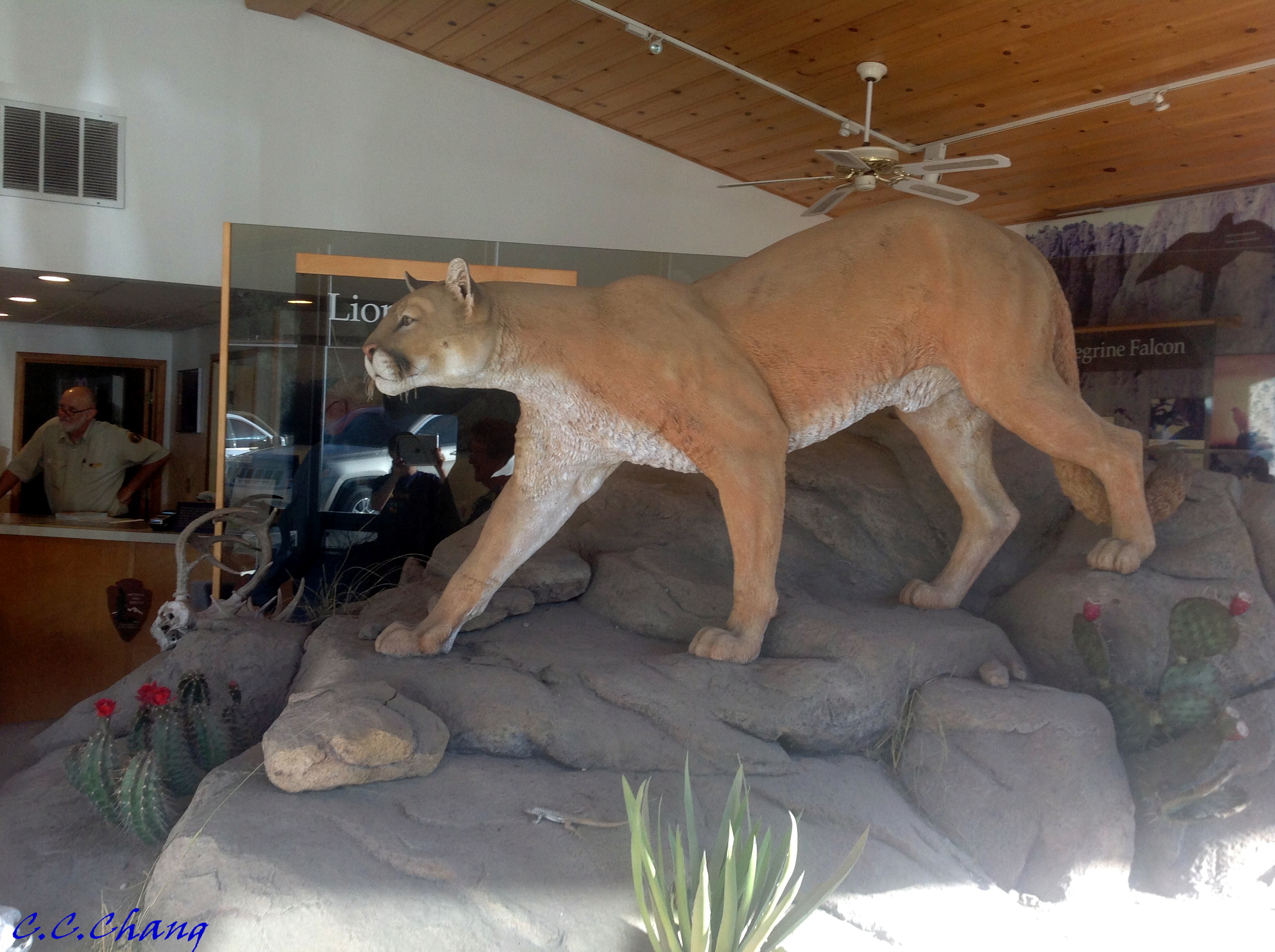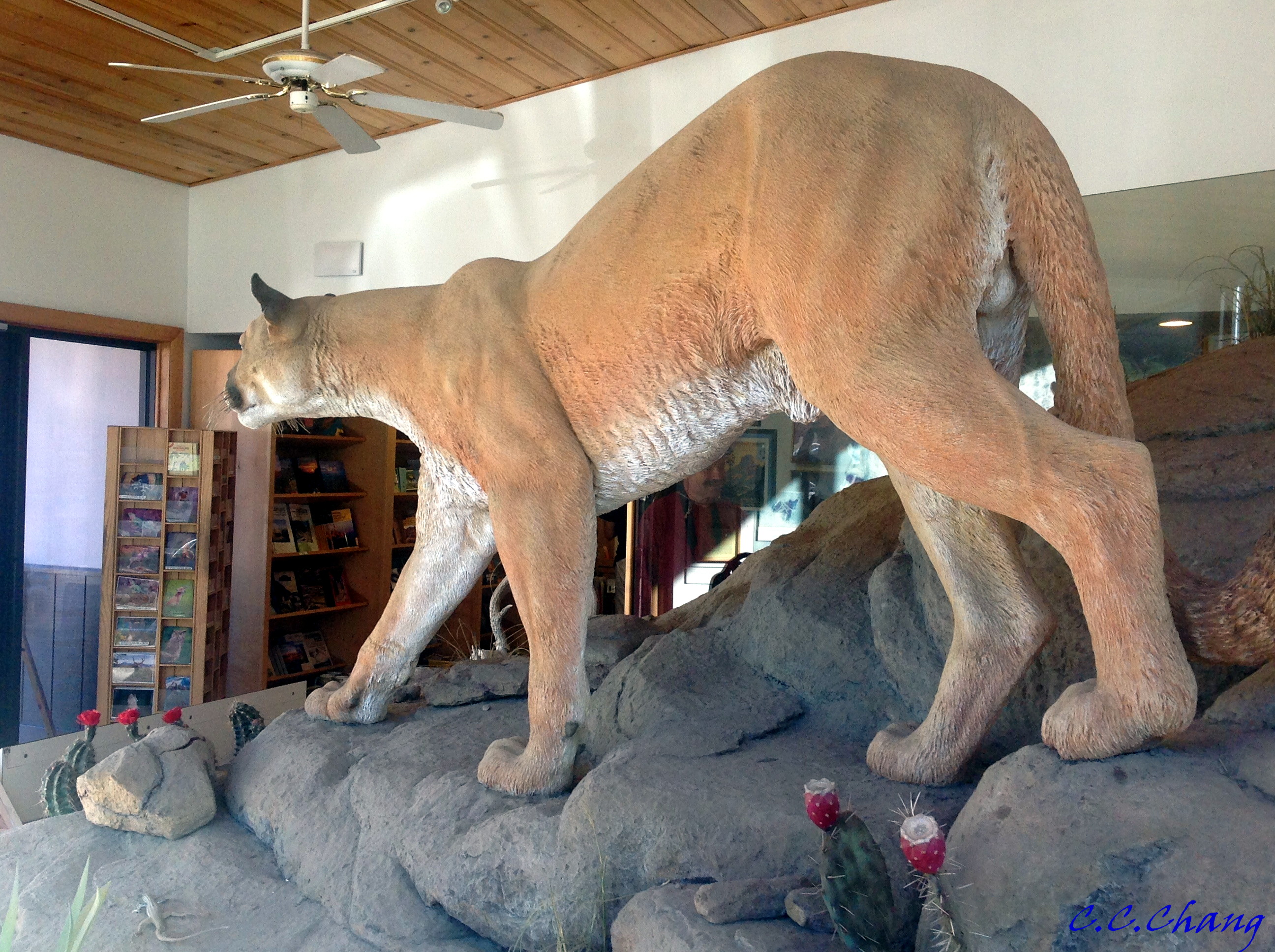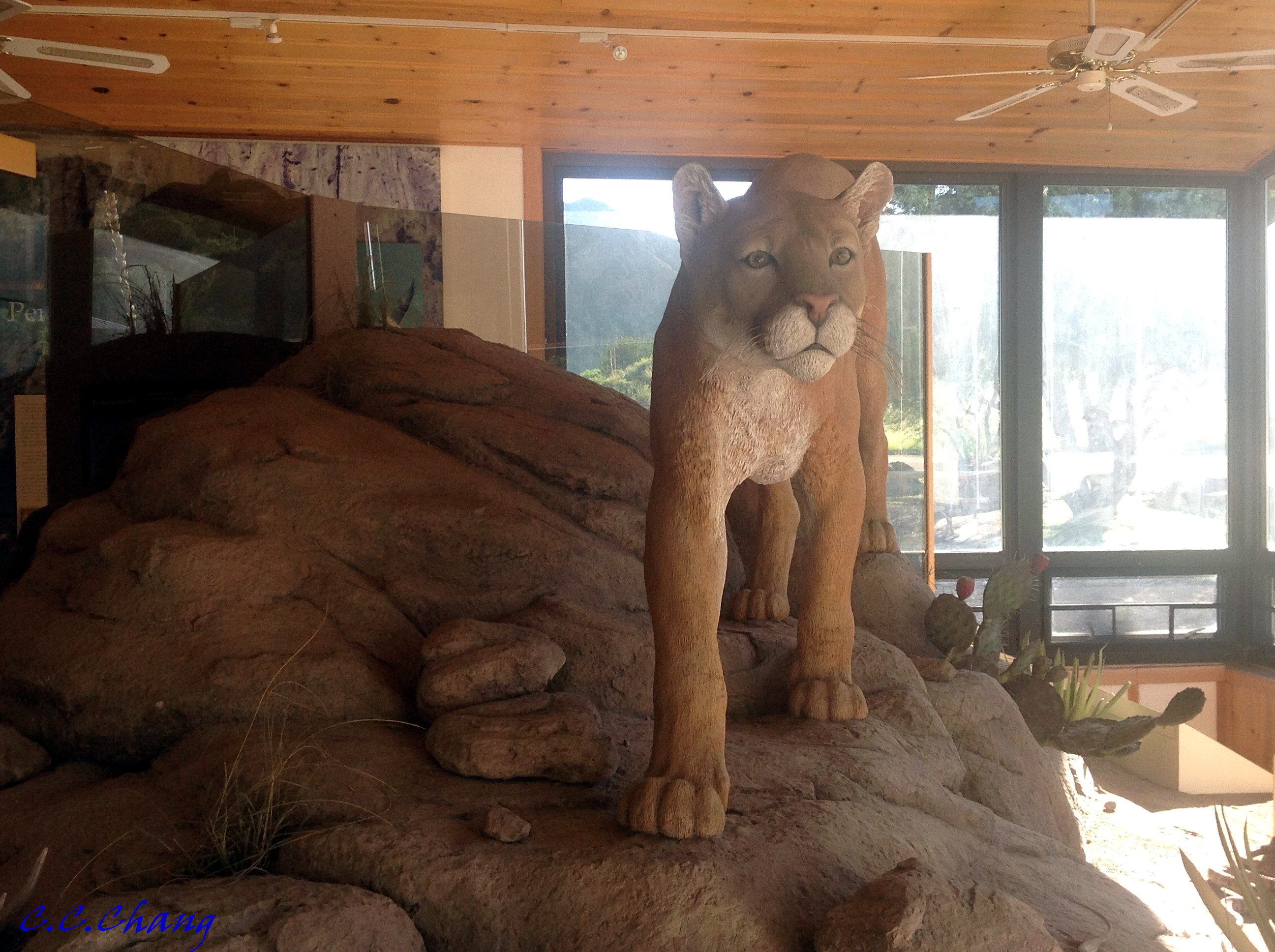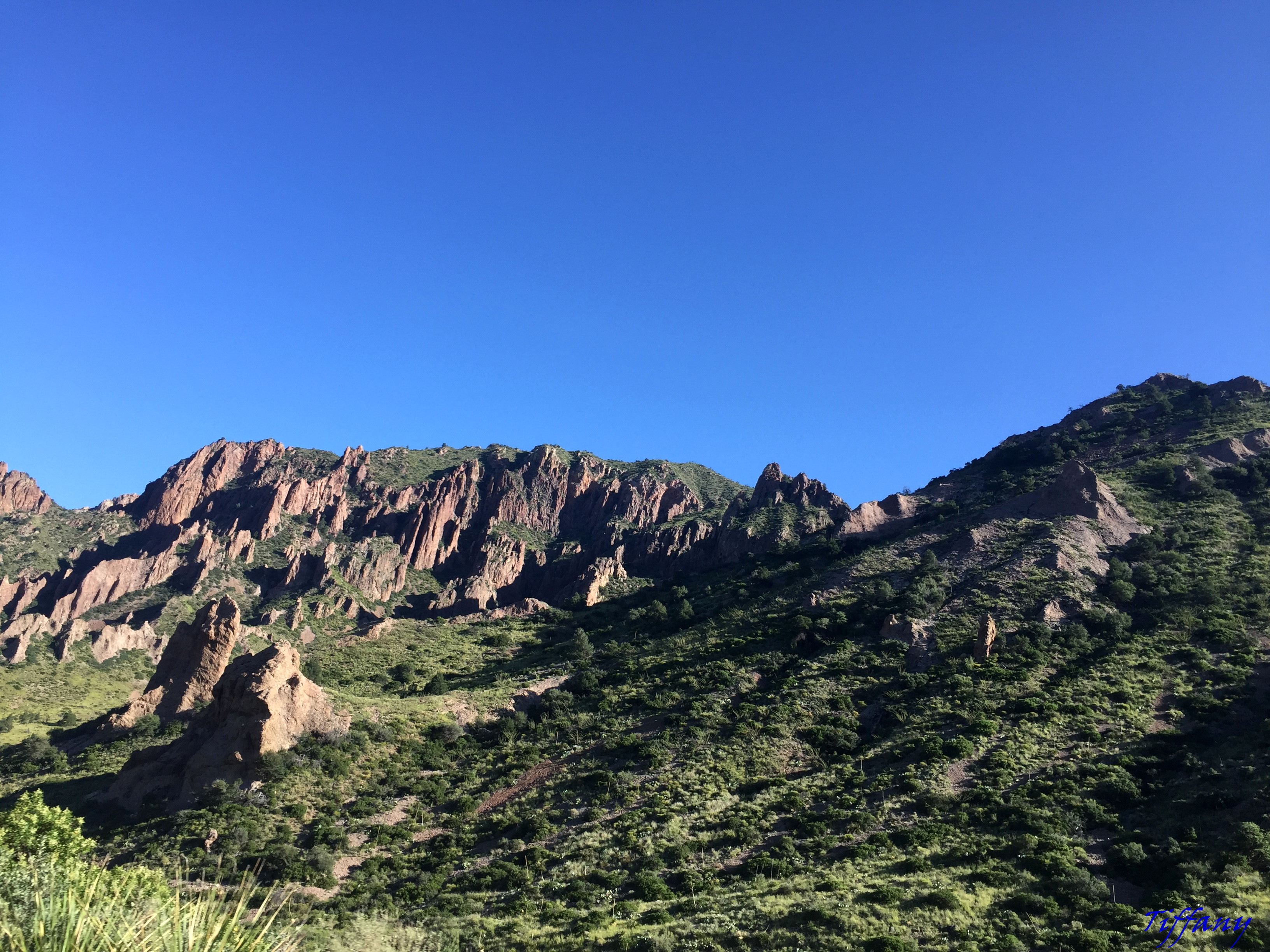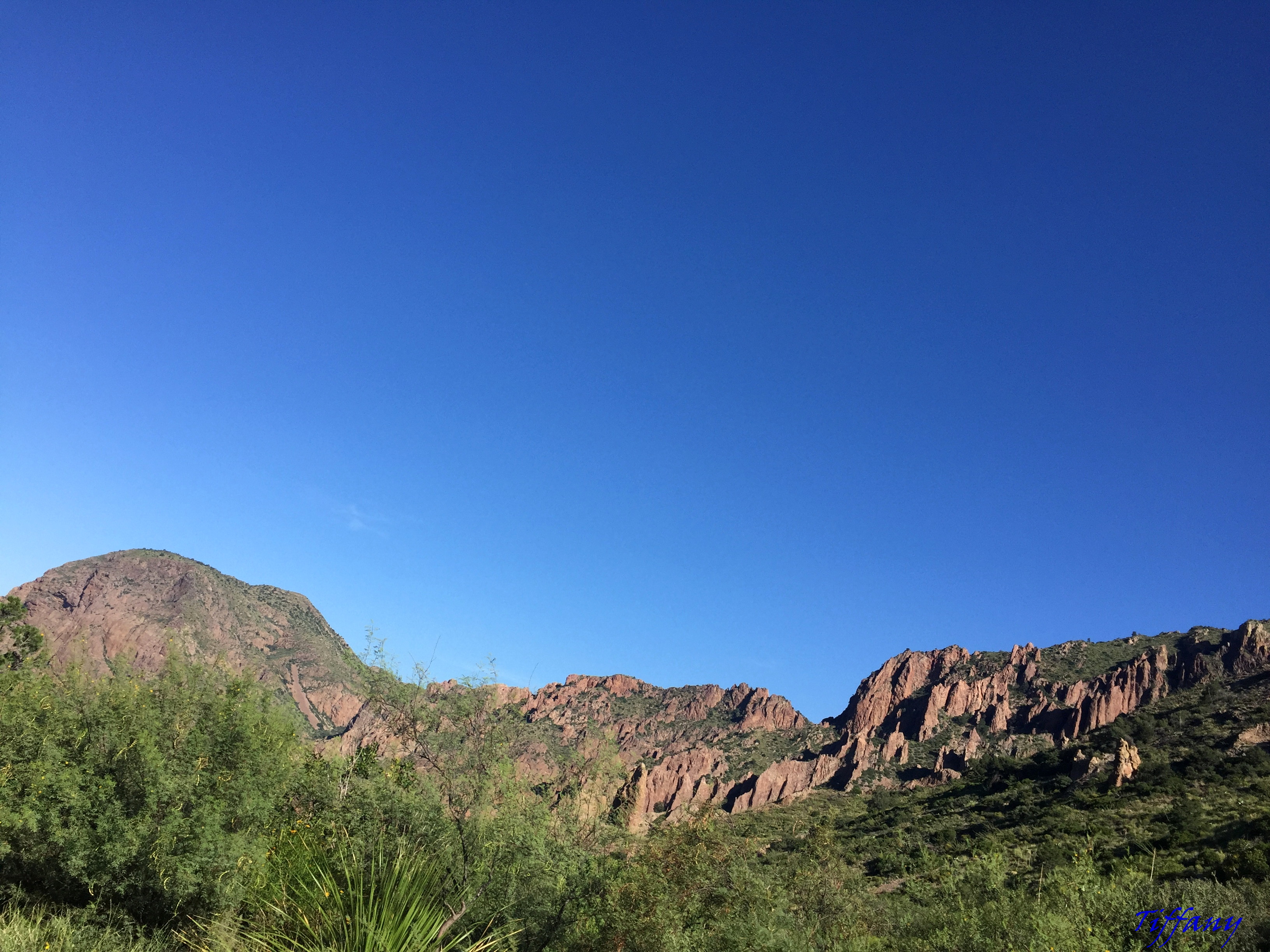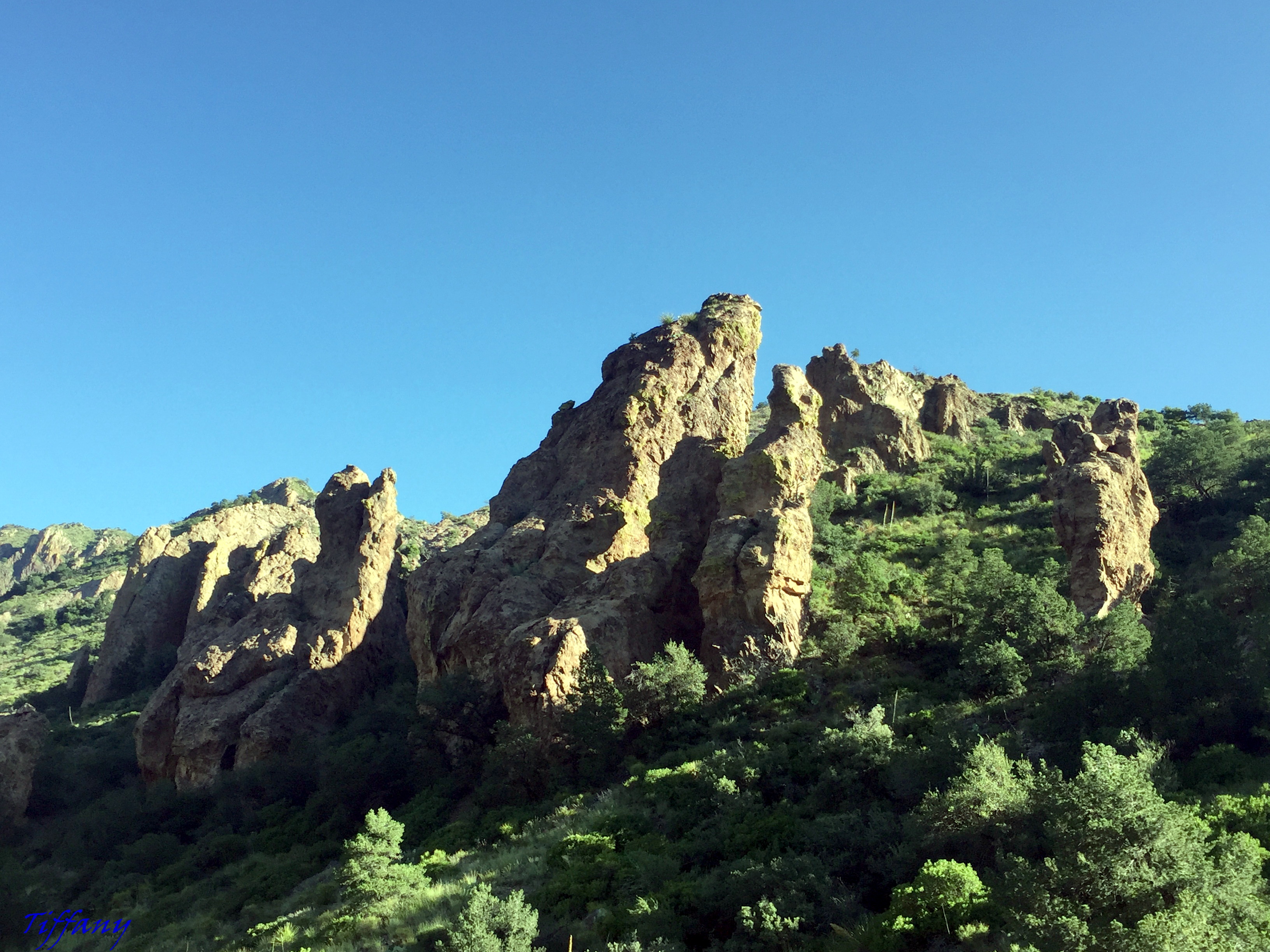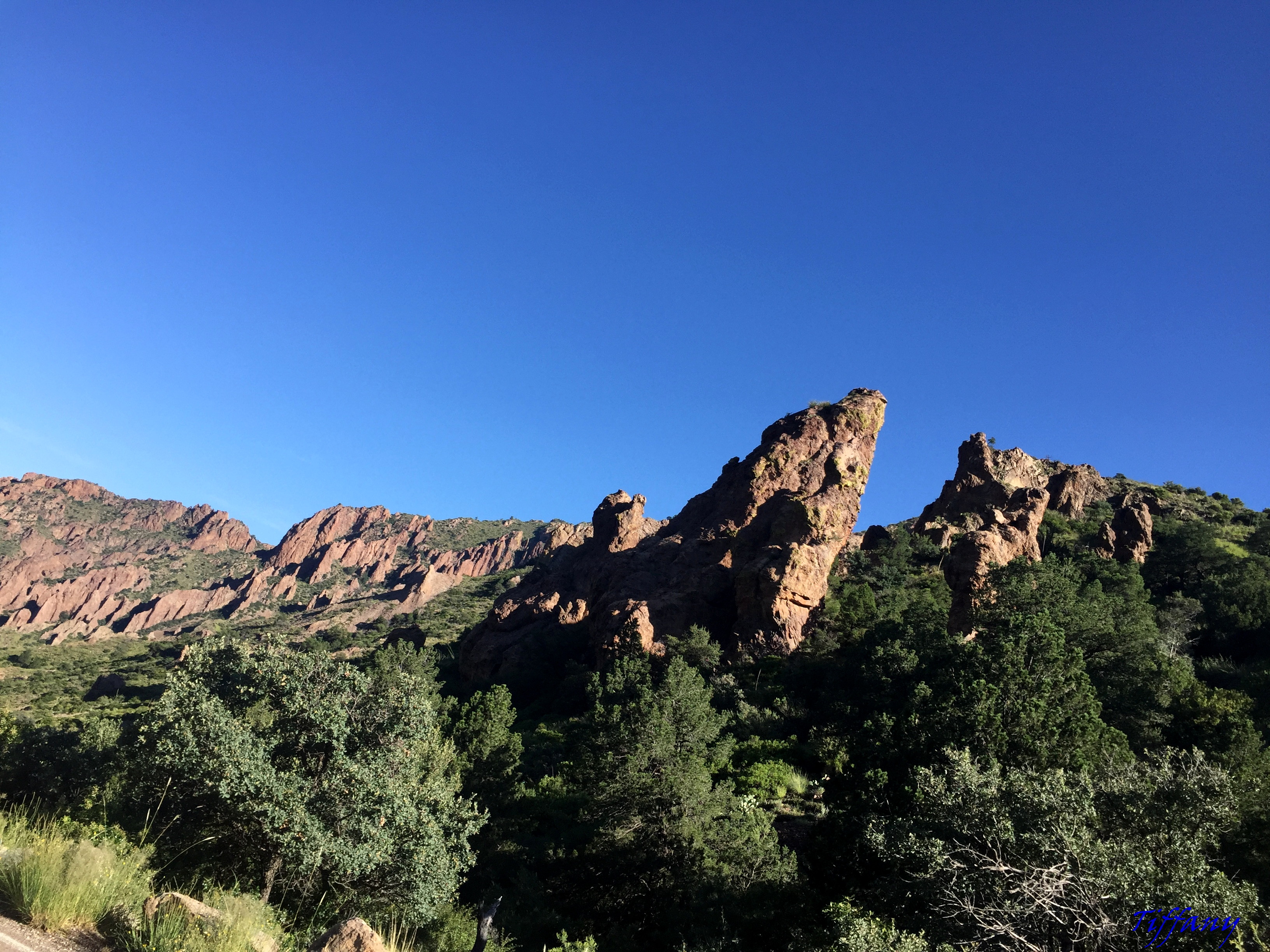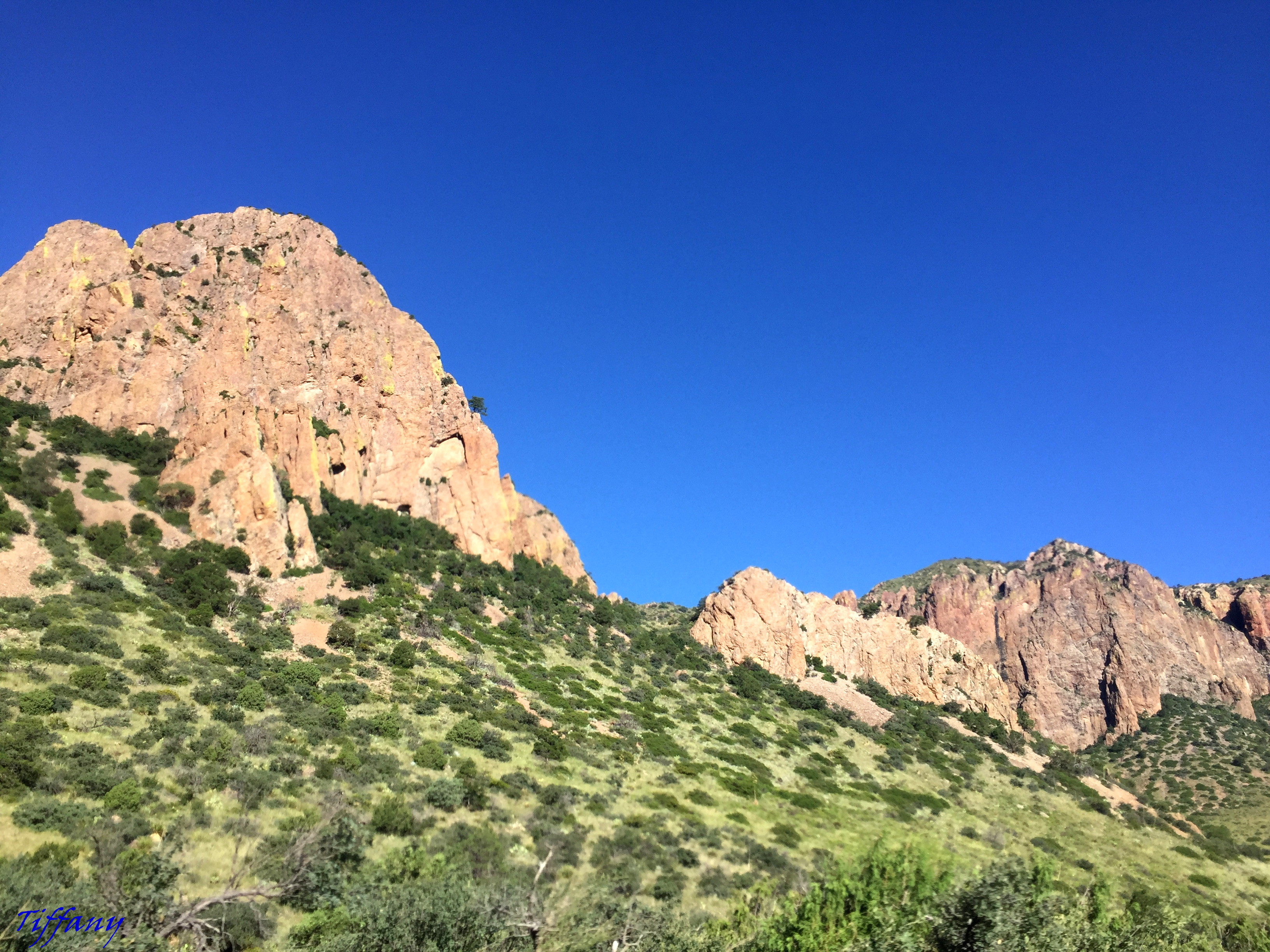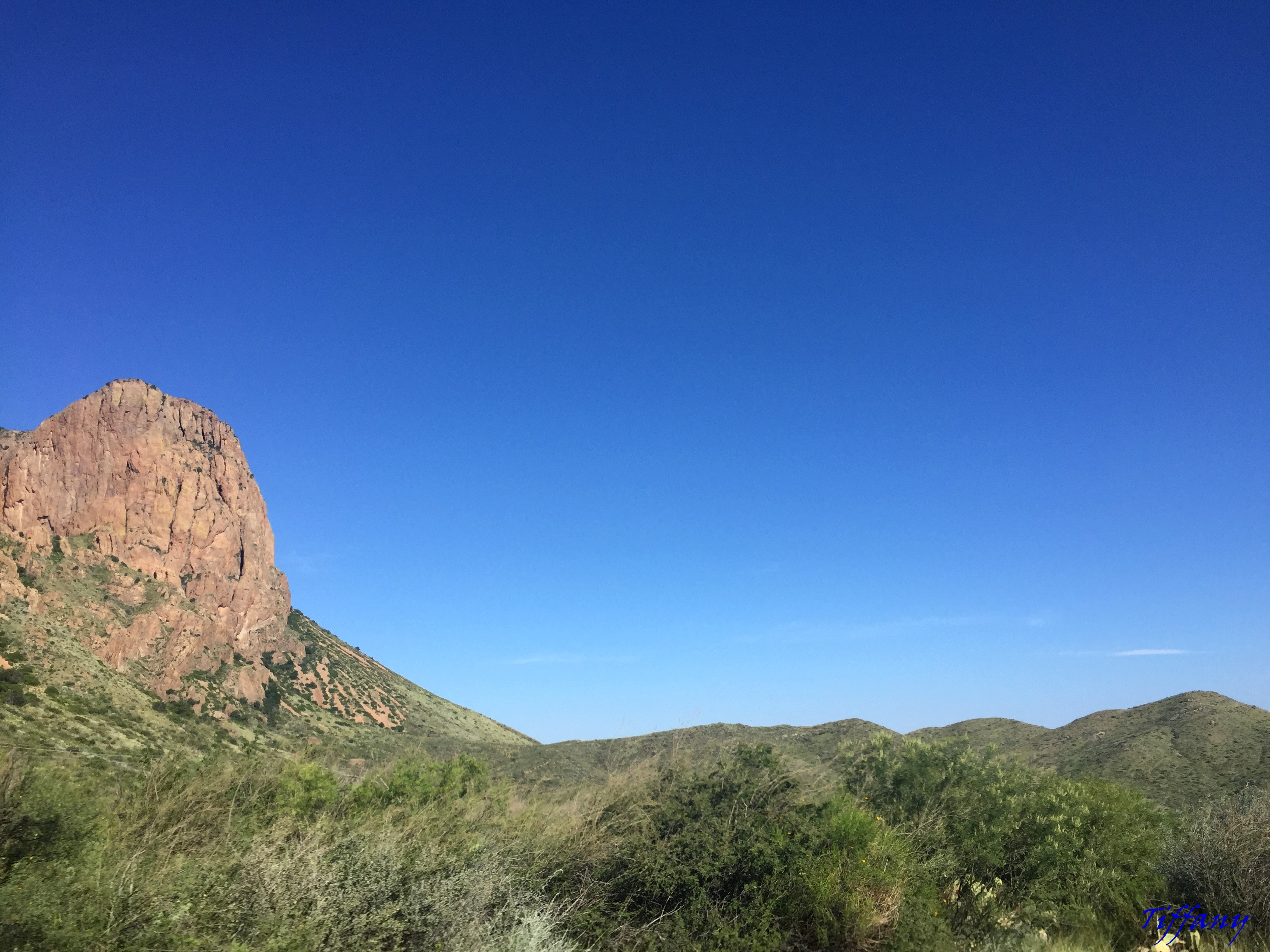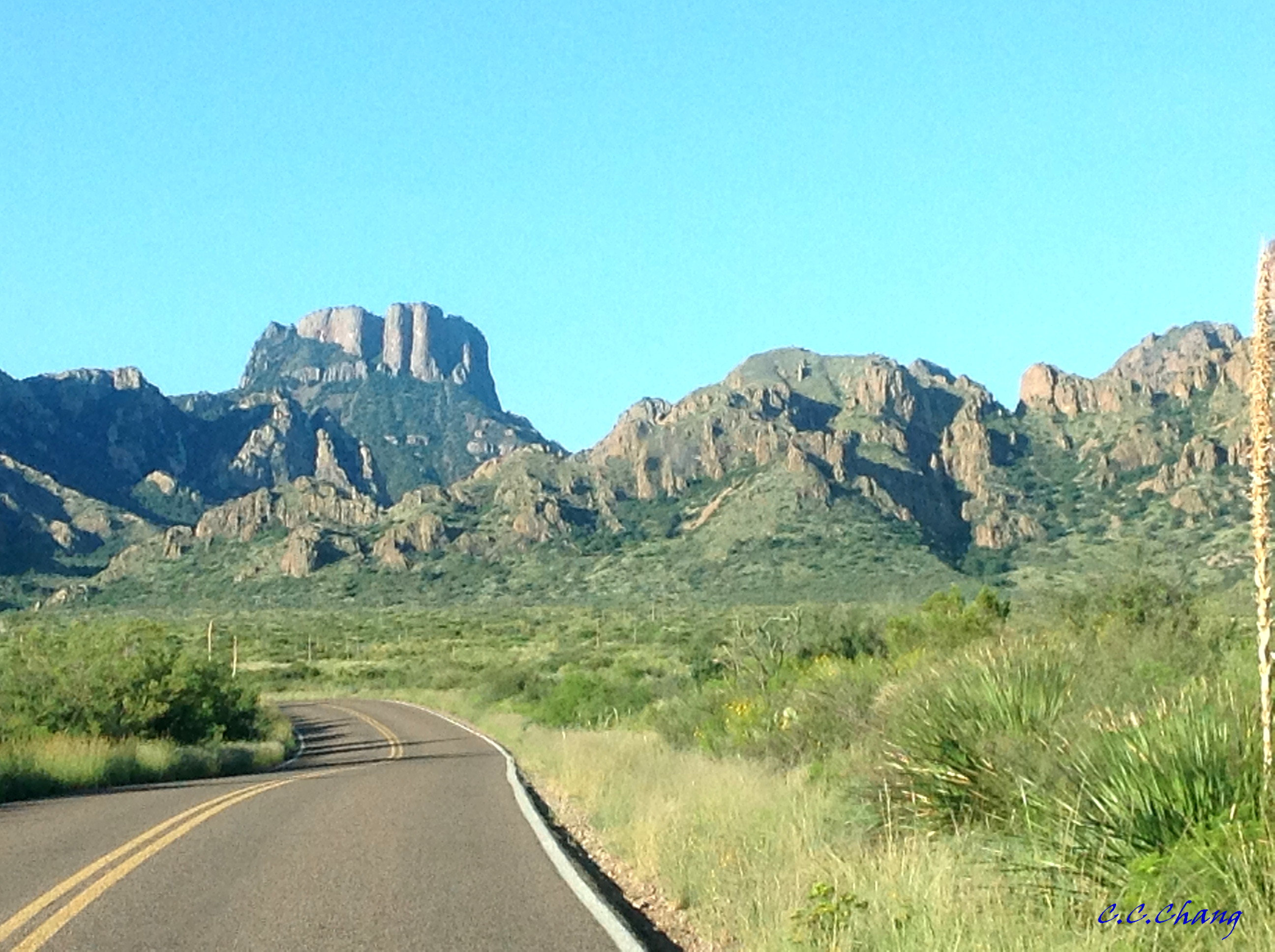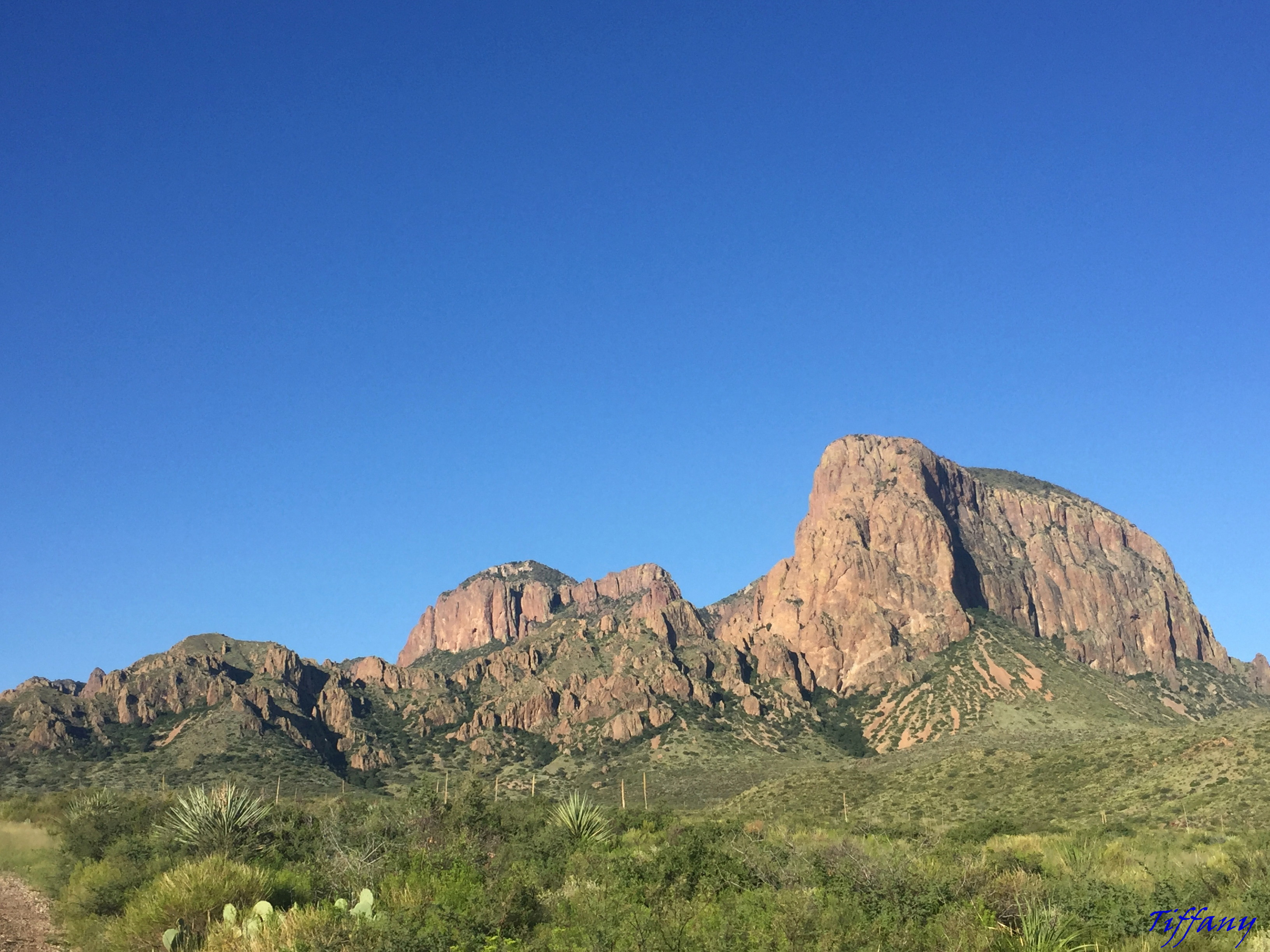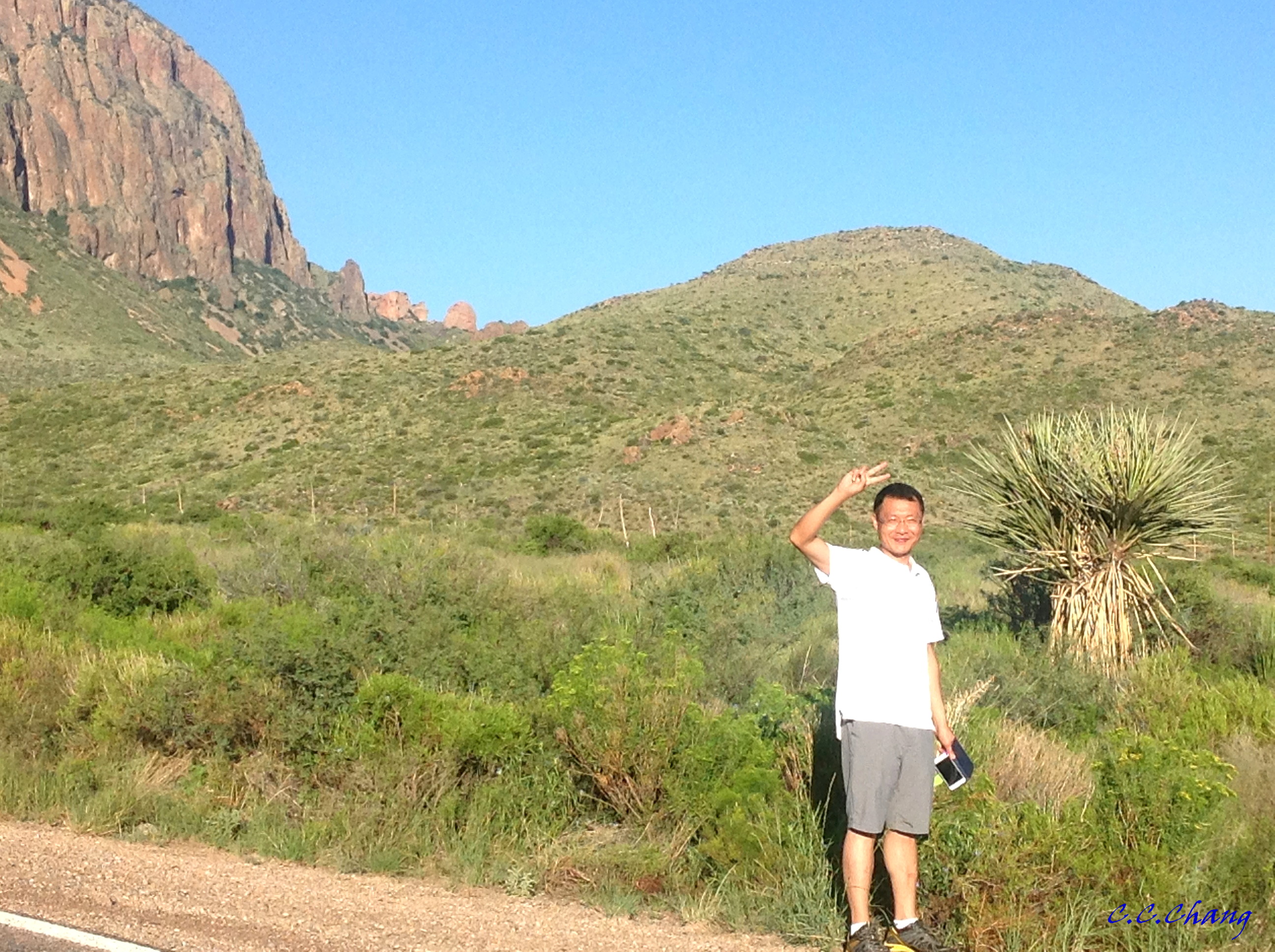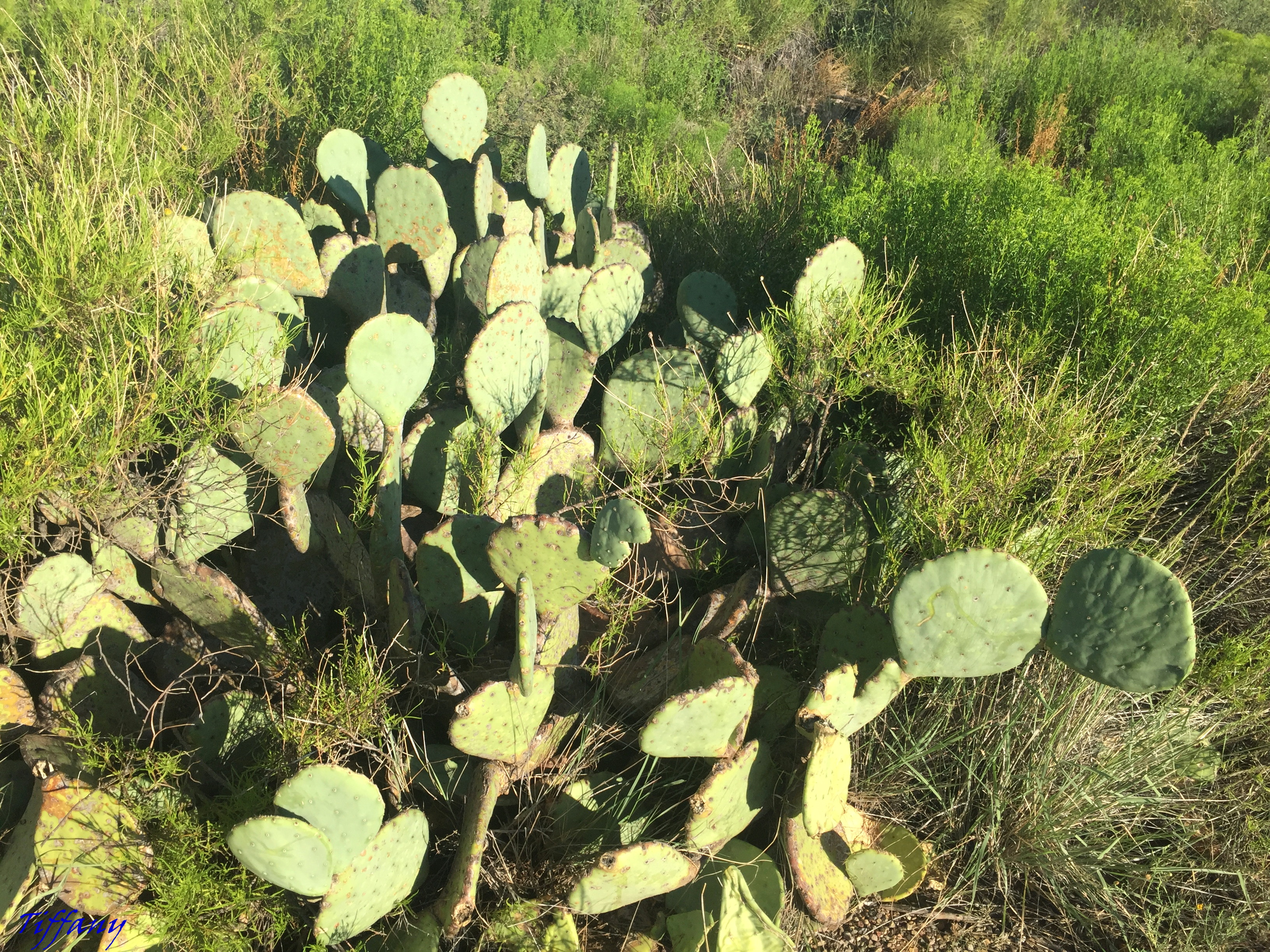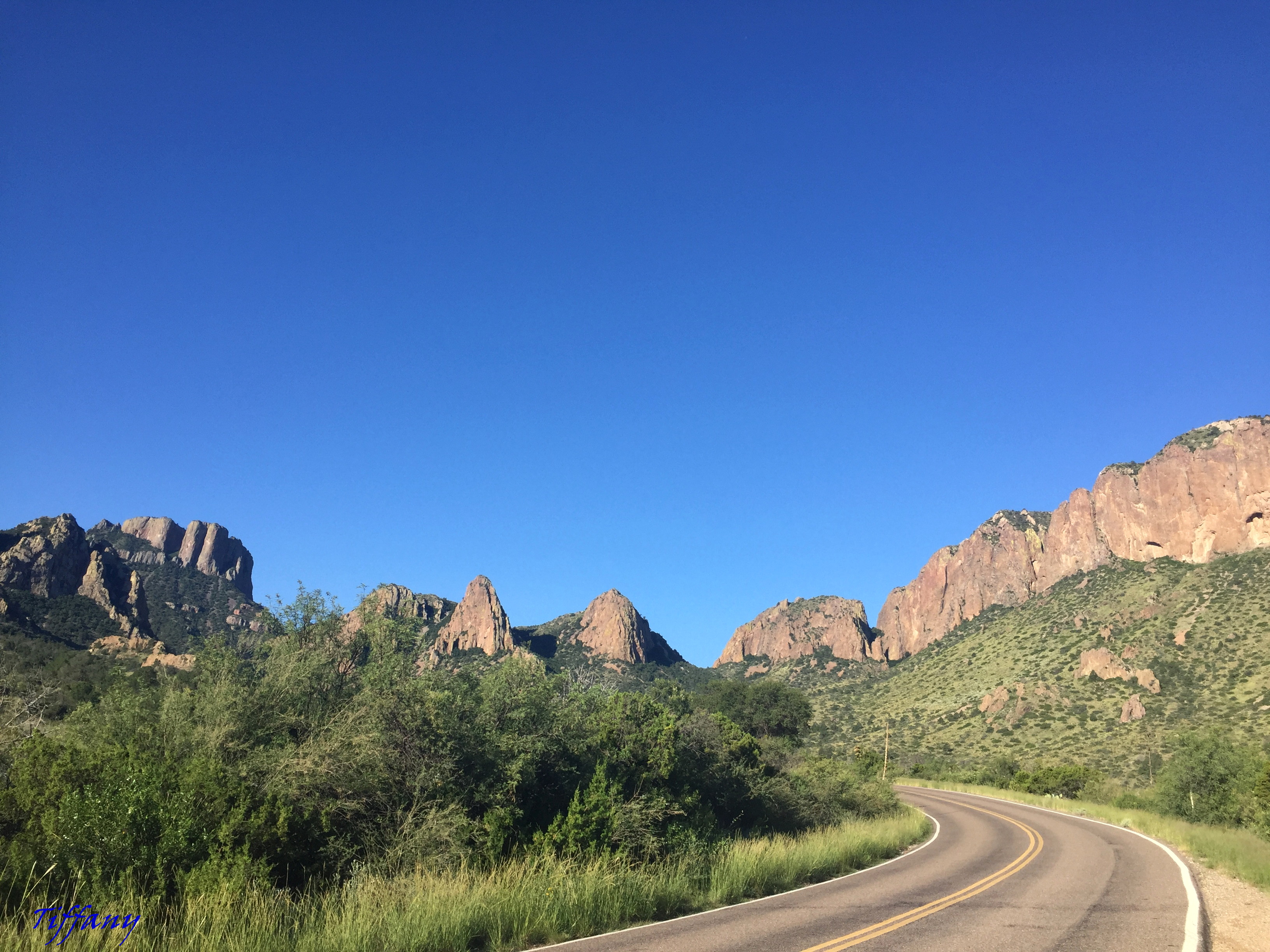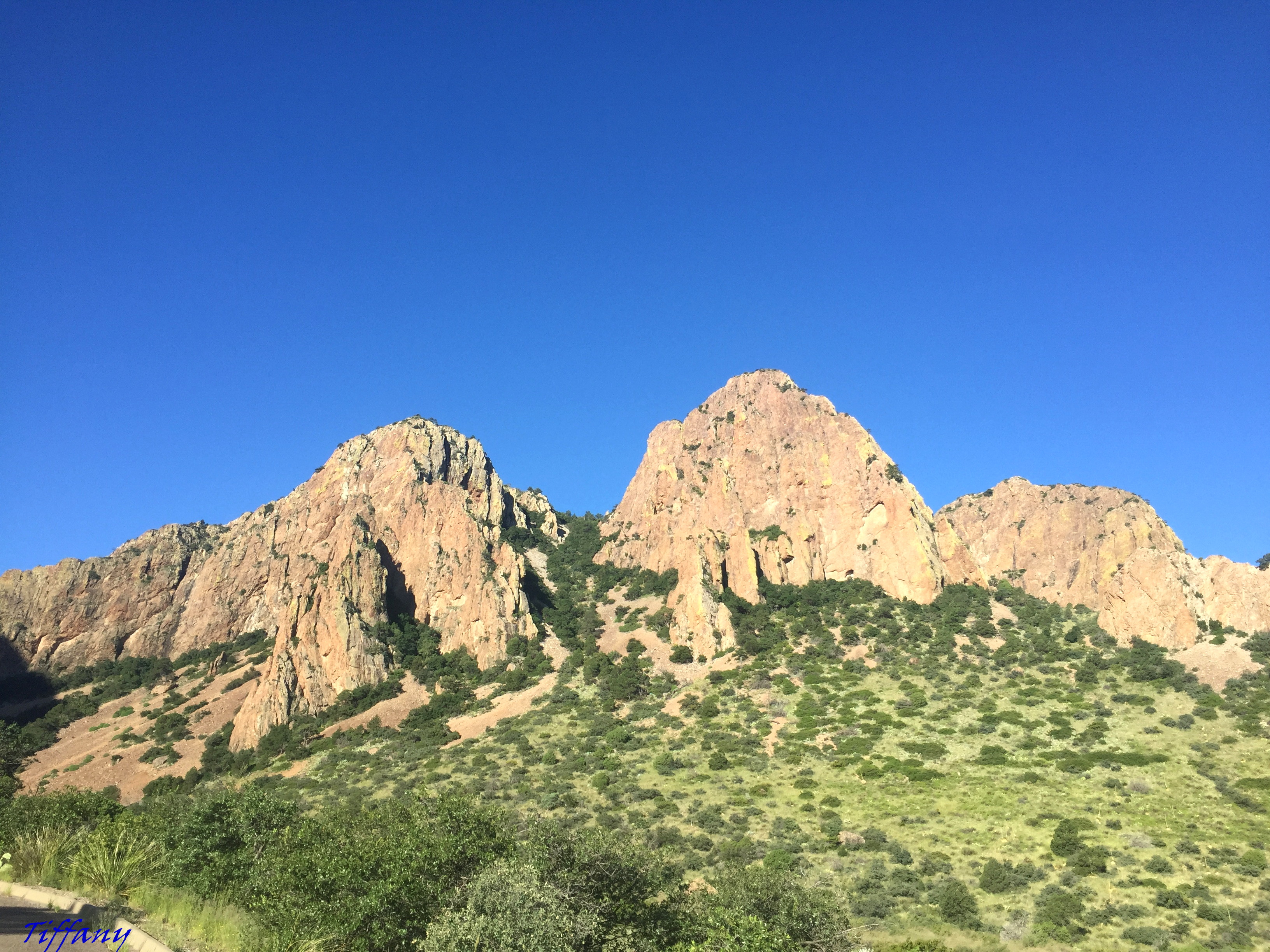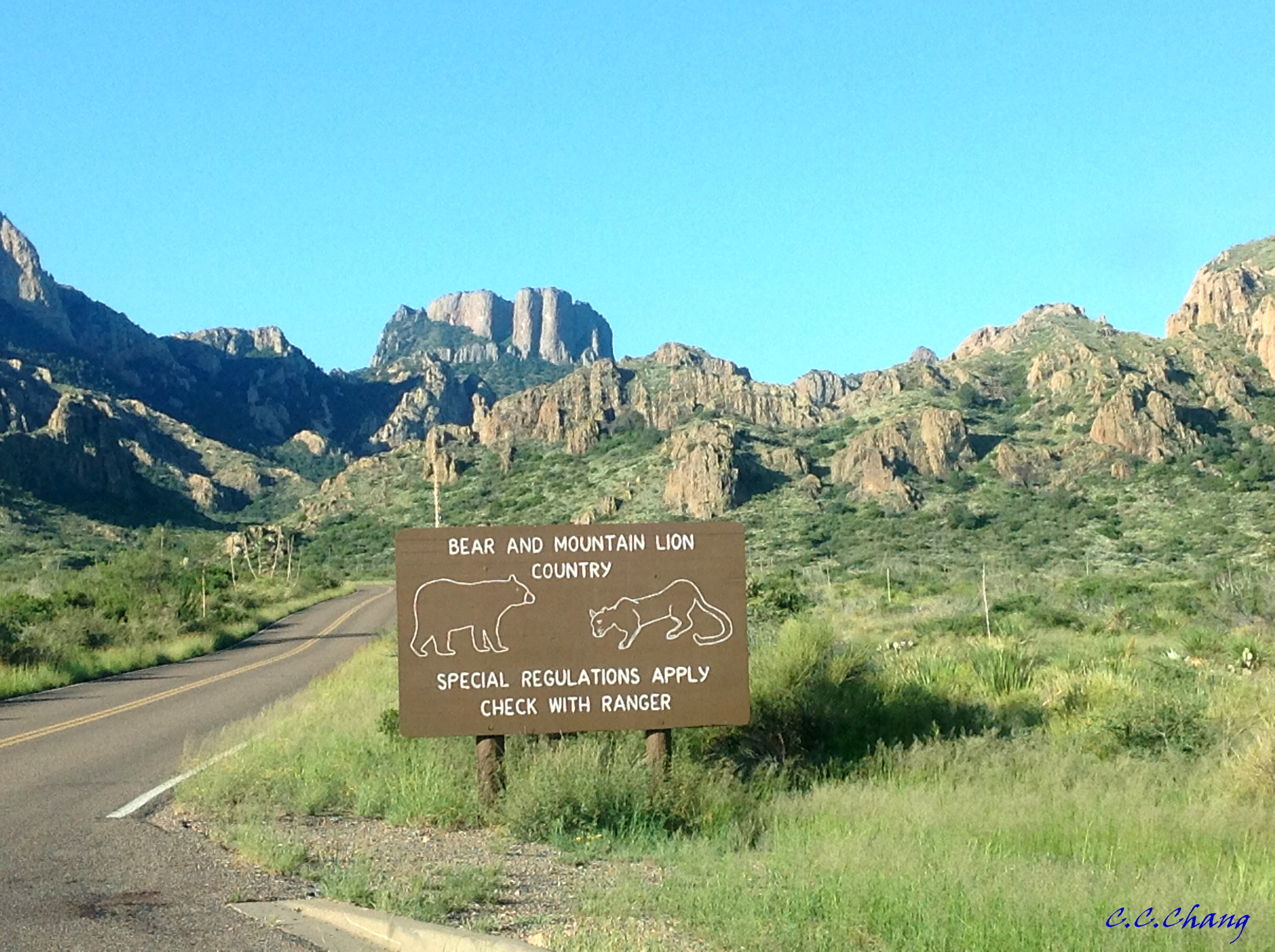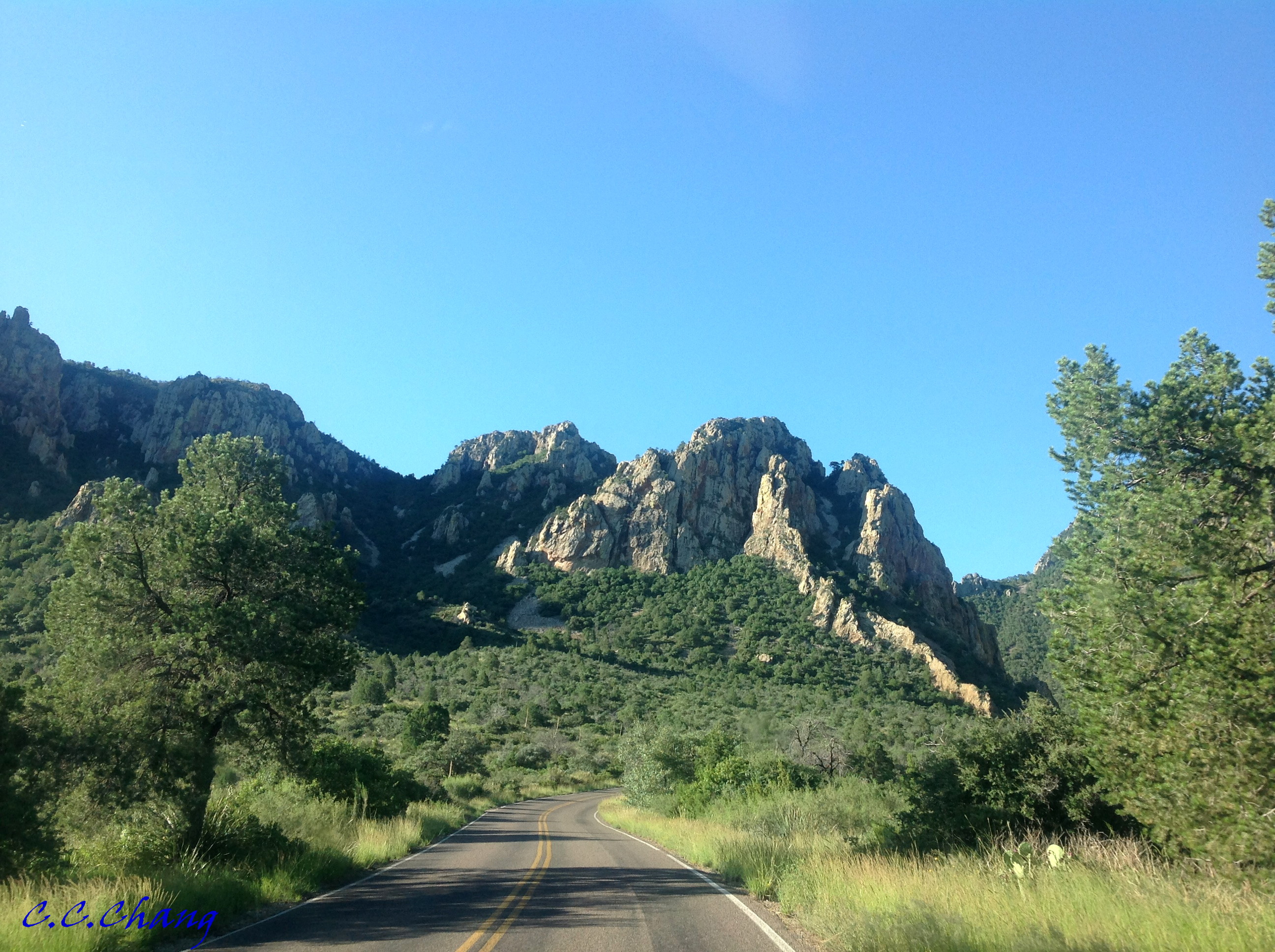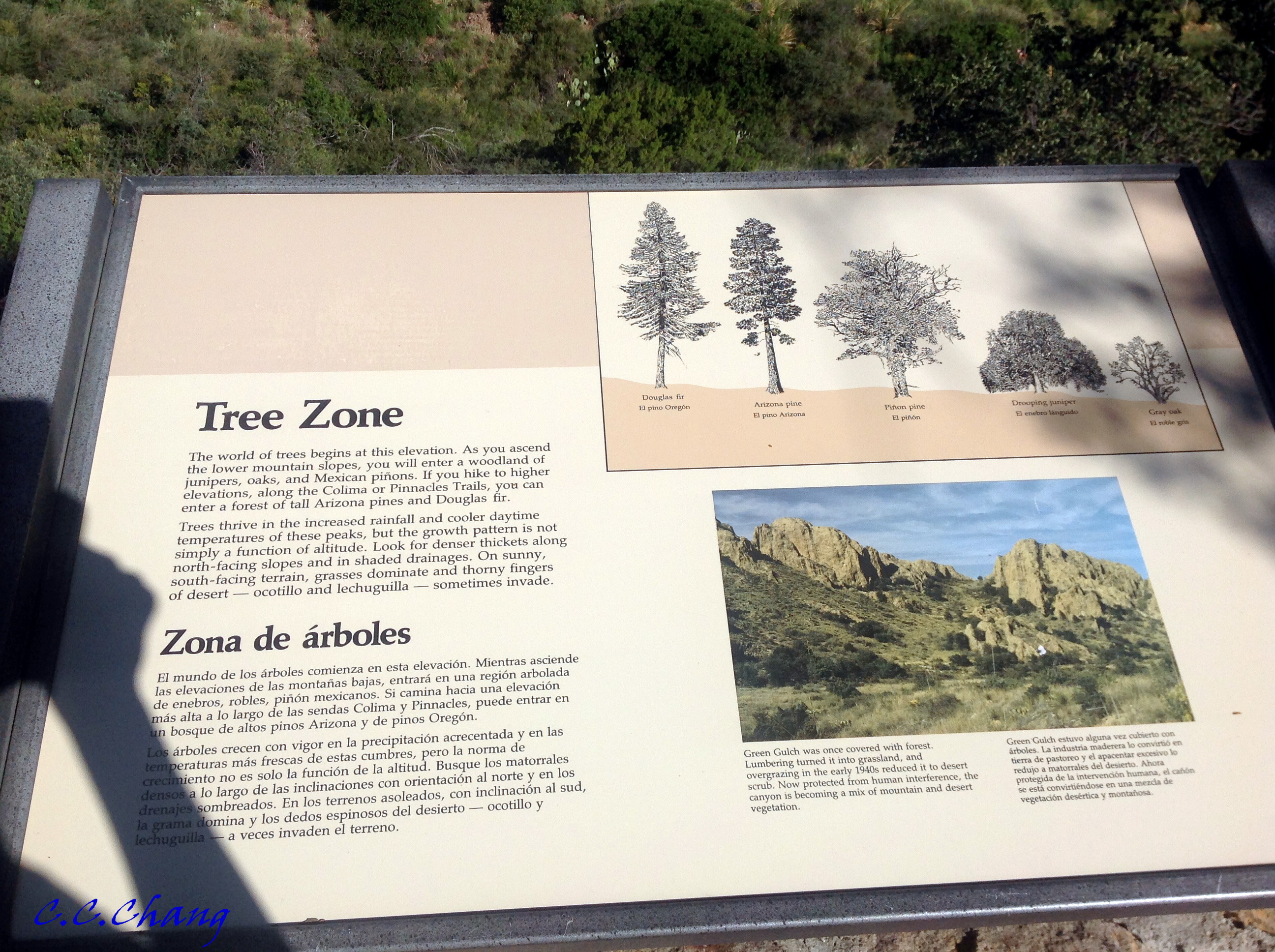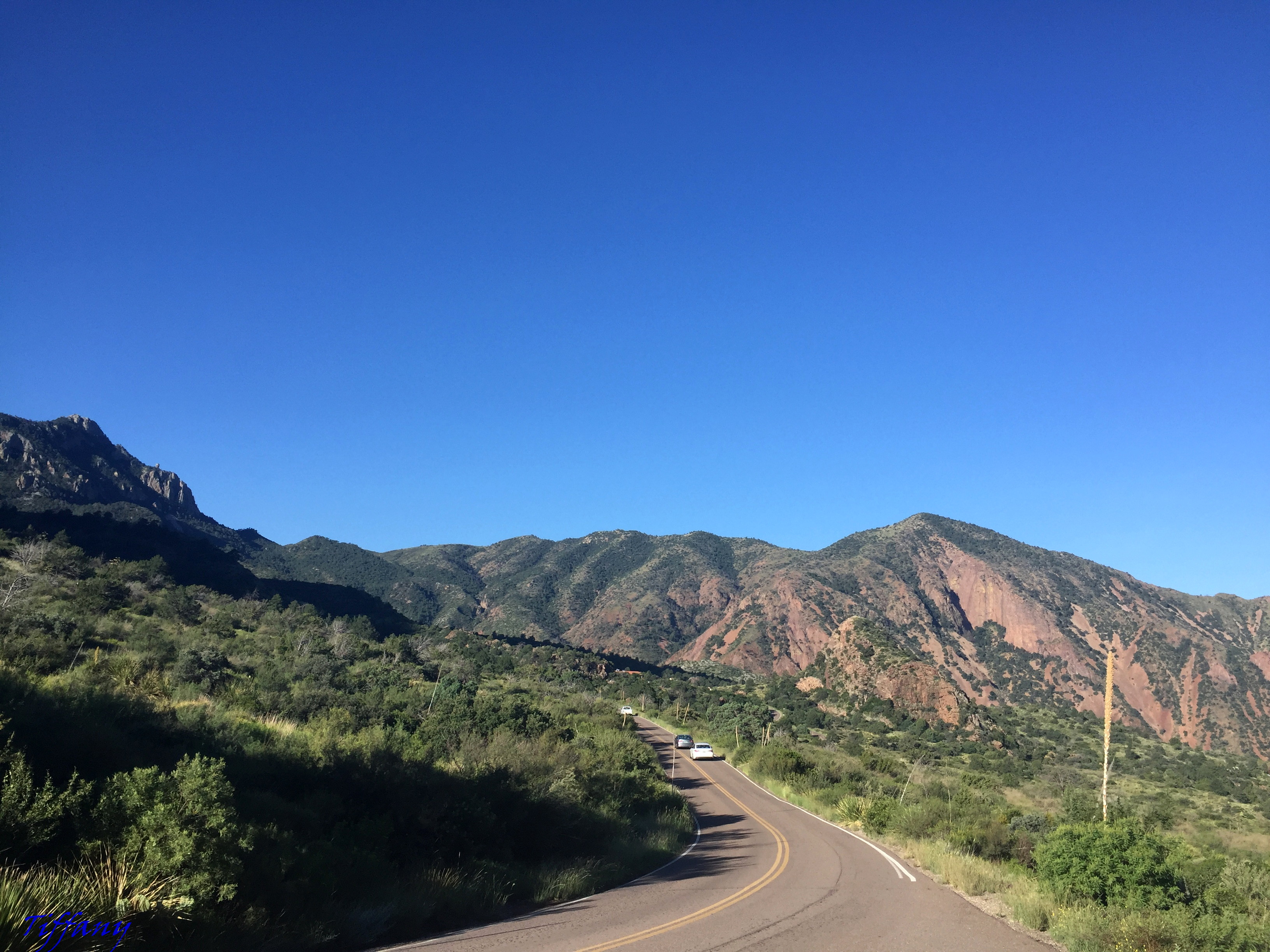先找出一張照Chisos Basin Visitor Center全景的相片!
原以為八月不會有〝瘋子〞去Big Bend National Park玩,沒想到來到了Visitor Center一看,還是有一些不怕酷熱的人耶!
這是在門前的雕像
若正面遇到這動物,你絕對不會認為這只是之大隻的〝CAT〞!
山獅(Cougar美洲獅、Puma)這動物可是很難預見的,可以說是可遇而不可求。所以說別怕,若Hiking時若遇到了牠,可以去買彩劵了!
和照片後的這位Ranger老先生聊了好一陣子,他給了我們一些Hiking Trail的建議,也告訴我們一些有關美洲獅的習性和遇到牠時該如何面對。
The mountain lion goes by many names, including cougar, catamount, panther, red tiger, deer tiger, and puma. This cat can be found throughout much of South and North America.
The mountain lion used to be found all over the United States, but now is primarily seen in the western U.S. An endangered subspecies of mountain lion also remains in Florida. These felines are comfortable in many different habitats and, aside from humans, have the widest geographic range of any land mammal in the Western Hemisphere.
In North America, mountain lions eat mainly deer, but they also eat smaller animals, such as mice and rabbits. These cats have a poor sense of smell, but have excellent vision and hearing that help them hunt in the early morning and evening hours. Their powerful hind legs enable them to jump as far as 40 to 45 feet (12 to 13 meters).
This carnivore stalks its prey until an opportunity arises to pounce. Mountain lions “cache” their prey, or hide it under leaves and soil, where they can come back and feed on it over the course of several days.
Mountain lions don’t roar, but females have a loud scream, which is believed to attract males.
Females have an average of two to four cubs per litter and give birth in a den. The cubs are born with spots, which usually disappear by the time they are roughly nine months old. Their eyes also change from blue to yellow by the time they reach 16 months old. By 18 months, the young cats leave their mom to go fend for themselves.
Because of their size, strength, and predatory skills, mountain lions are considered one of “big cats.” Tigers,Leopards,Cheetahs, and Jaguars are also part of this grouping.
仔細聽了後發覺,和遇到灰熊的對應方式一樣。面對這種肉食性的,而且是攻擊性強的動物,主要是不能【轉身逃跑】,這會激發牠們獵捕的本性,會讓牠不加思索地撲向我們。最好的方法是緩慢的向後退(不能背對牠),製造一些聲響,張開雙手讓牠們以為我們很〝大隻〞不是好對付的!當然趕緊走避是最好的方法,因為我們侵入到牠的生活範圍,本該尊重的退後讓出牠的地盤。
真心希望能看到山獅,但Ranger說太難了,牠們比較是夜行性的,天氣太熱時牠們都躲在岩石或樹蔭下休息,毛色的保護下很難被察覺。
雖然有些失望,但還是冒著大太陽走出室外四處觀賞。這叫山嗎?感覺像是塊大岩石,既奇特又很美!
這附近的山勢並不陡峭,但怪石林立!
開車在附近逛逛,這麼熱,大概沒人願意用走的賞風景了!
這裡的岩石實在奇形怪狀的!
到是天空好藍,幾乎看不到一片雲!
2018年1月31日 星期三
2018年1月23日 星期二
2017 Big Bend National Park Travel — 8/19 Chisos Basin Road
進入國家公園的閘道之後往東開一陣子,路的右手邊會出現一個像是火山口的山!
查了下地圖,應該就是Tule Mountain。
這奇怪的植物我是有買書準備回來查看的,但忘了帶在身邊,哈,下次補上!
這倒是有點像蘆薈
繼續往東開,沒多久會碰到一個Castolon/ Santa Elena Junction,往右就是Ross Maxwell Scenic Drive。我因為已經計畫好要先去Chisos Basin Visitor Center,所以並沒有右轉(Castolon Visitor Center 夏天是不開放的)。
當四周開始出現一些小山丘時,來到了Cisos Mountains Basin Junction,這時往右轉,開上Chisos Basin Road。
漸漸地,你的眼前會出現一連串的山群,查看了一下這座應該山是Lost Mine。
每座山的頂部還各有特色,感覺既美又有趣!

這是我在網路上找到的資訊,因為照相的位置不同,左看右看還是不敢確認到底是哪座山!
但風景的美雀是無庸置疑的!
這些山在Big Bend National Park應該算是令人驚豔的存在,印象裡的沙漠地形,從Austin一路往西開,只在此處看到高山(近在眼前)!
正中間的那座山應該是Casa Grande
而這獨樹一格的植物,挺配這山!
女兒身後的這座大山應該是Pulliam
姊弟倆難得的合照
陽光照射著,在陰影的襯托下更顯得山勢崎嶇!
越往裡開,更像是走進了奇岩怪石中,每座山都很有個性!
Chisos Basin Road從一開始的平淡無奇,到在這群山中穿過,應該是我心目中Big Bend National Park的最美景致路線了,難怪國家公園的旅館就蓋在這條路的尾端。(還是說,為了旅館的美麗景致將路鋪到那裡?)
近距離觀看更顯宏偉
女兒照的,只是用iPhone怎麼能照這樣的我這老人家還是不知道,哈哈!
會害怕遇到Mountain Lion嗎?真遇到就該去買彩劵了!
看到建築物了,馬上就要到達Chisos Basin Visitor Center了!
查了下地圖,應該就是Tule Mountain。
這奇怪的植物我是有買書準備回來查看的,但忘了帶在身邊,哈,下次補上!
這倒是有點像蘆薈
繼續往東開,沒多久會碰到一個Castolon/ Santa Elena Junction,往右就是Ross Maxwell Scenic Drive。我因為已經計畫好要先去Chisos Basin Visitor Center,所以並沒有右轉(Castolon Visitor Center 夏天是不開放的)。
當四周開始出現一些小山丘時,來到了Cisos Mountains Basin Junction,這時往右轉,開上Chisos Basin Road。
漸漸地,你的眼前會出現一連串的山群,查看了一下這座應該山是Lost Mine。
每座山的頂部還各有特色,感覺既美又有趣!

這是我在網路上找到的資訊,因為照相的位置不同,左看右看還是不敢確認到底是哪座山!
但風景的美雀是無庸置疑的!
這些山在Big Bend National Park應該算是令人驚豔的存在,印象裡的沙漠地形,從Austin一路往西開,只在此處看到高山(近在眼前)!
而這獨樹一格的植物,挺配這山!
姊弟倆難得的合照
陽光照射著,在陰影的襯托下更顯得山勢崎嶇!
越往裡開,更像是走進了奇岩怪石中,每座山都很有個性!
會害怕遇到Mountain Lion嗎?真遇到就該去買彩劵了!
看到建築物了,馬上就要到達Chisos Basin Visitor Center了!
訂閱:
文章 (Atom)

